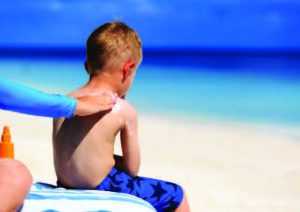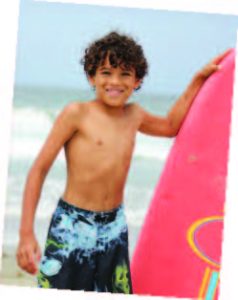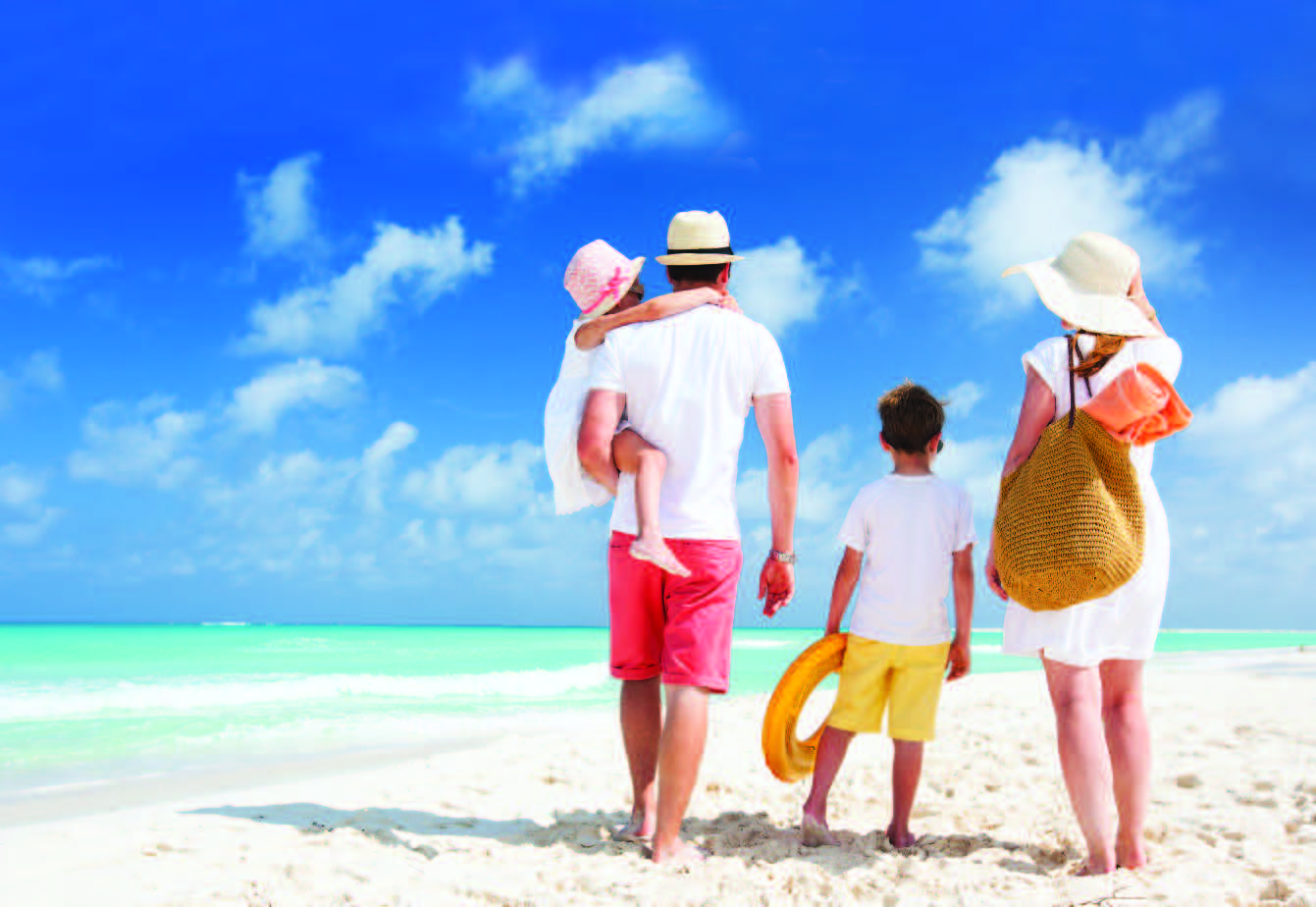What you don’t know can hurt you.
By Alison Hemstitch
Over the next couple of months, Spring Break stories will be taking up a lot of bandwidth. College students and 20-something singles will be invading beach towns around the country for a week of drinking and debauchery. Lost in the blur of bikini parties is the fact that a huge number of young families also fly south to catch a week of sunshine before the first whispers of spring.
Unfortunately, a certain percentage of vacationing families will be victims of illness, accidents and other mishaps. The better prepared you are and the clearer you are in terms of your actions and options, the less likely they are to be vacation-killers.
“Spring vacation is a great time for families,” says Yelena Samofalov, MD, of the Trinitas Pediatric Health Center.“
Making it safe is just as important as making it memorable. Before you travel, find time to visit your family doctor to make sure you and your kids receive any necessary vaccines. For instance, flu season might be over here in New Jersey, but in other parts of the world it could still be a factor.”
Most warm-weather vacation problems start at—where else?—the water’s edge. The obvious ones involve the sun. Keep in mind that your kids have probably been dealing with a New Jersey winter for several months and that they will burn quickly and easily. A lot of families will check in to their hotel, tear off their travel clothes and sprint toward the water, making up for lost time, as it were. An hour frolicking on the sand or at a resort pool is all you need to get a bad burn.

BURNING LOVE
Needless to say, any time spent under an open sky demands sunscreen with a minimum 30 SPF. Most adults can go 20 minutes before having to cover up. However, on a hot, sunny day a child with sensitive skin can start burning in less than 10 minutes without protection. If kids sweat or go swimming, you’ll have to reapply. So either travel with a plentiful supply of sunscreen or make sure you can buy it easily where you’re staying. If you rent a car, it’s a good idea to take an extra container and throw it in the glove compartment. Okay, so now your child is beet-red and in excruciating pain. First of all, know when it’s time to seek medical attention. As a rule, a temperature of 101 or more is the tipping point. And a severely burned baby (one year or younger) should generate a call to the doctor, because sunburns are extremely dehydrating. By definition, this is an emergency.
For older children, hotel-room treatments and remedies are fairly straightforward. The first move is a cool (not cold) shower or bath. No soap. No rubbing dry. Next, a visit to the ice machine. Wrap a handful of cubes in a damp hand towel and apply it to the reddest areas. If pure aloe vera gel is in your survival kit, apply it liberally and often—it speeds healing and moisturizes. You can also soak a washcloth in milk and use it as a compress. Milk will create a kind of protein film that will reduce the heat. Also, monitor how often your patient is urinating. You’ll want to give them water and juice to keep them hydrated for then next few days.
DON’T EAT THAT!
Another source of vacation misery is food poisoning. Many families will try to save time or money by packing sandwiches for the beach and tossing them in a cooler. Be aware that anything involving meat, cheese, mayo and other condiments may spoil quickly and cause problems later. Better to plan a day at the beach between meals and bring dried fruit or cookies to keep up the energy of the little ones.
Of course, most of your vacation meals will be prepared by someone else. So there is no telling how diligent they are about food safety. And then there is the resort buffet, where your fellow guests have an opportunity to contribute their germs to the mix.
Should your child develop nausea, a stomach ache, diarrhea or start vomiting, don’t panic. Food poisoning is ugly but it is not a total vacation-killer. In many cases, with enough rest, the kid will bounce back in two or three days. The key is to avoid dehydration—this happens in a child much faster than in an adult. Make sure they consume (and keep down) five ounces of clear liquid per hour. And station them close to the bathroom. If abdominal cramping is severe, a heating pad on the stomach will provide much-needed relief.
Once the nausea and diarrhea have stopped, reintroduce food gradually. Bananas are ideal in a vacation setting. A room service order might include toast, noodles or rice and eggs. One mistake parents make is to give milk to a recovering child. The enzymes in their small intestine have been wiped out and they may not be able to process the lactose.
The good news is that what appears to be food poisoning might not be food poisoning at all. Sometimes, on vacation a child will try some unfamiliar food and discover he or she has some kind of intolerance. Also, babies and toddlers have been known to eat sand. Yeah, that happens. In both cases, evacuation is usually fast and furious and your vacation won’t miss more than a half-beat.
SKIN DEEP
Less likely to ruin a vacation but more common are the scratches, scrapes and cuts a child will suffer in an unfamiliar environment. The same is true of insect bites and stings. Skin cuts and abrasions get the same treatment on vacation as at home. Wash them thoroughly with soap
under running water for several minutes, and make sure to gently scrub away dirt with a washcloth. Cover the wound with a bandage and some Polysporin, and change the dressing once or twice a day, or more often if it gets wet. Better yet—especially if you’re on vacation near a body of water—use a liquid bandage product. You may get through the entire vacation with a single application.
With bug stings and bites, it is very important to monitor your child’s reaction. If you already know your child is allergic to, say, bee stings, then you are familiar with the immediate action steps—an Epinephrine injector is a must. If not, then facial swelling, a severe rash, dizziness, labored breathing—or any combination—are signals to locate a doctor ASAP. Remember, in a vacation setting you may encounter an entirely new creature. In Mexico, for instance, baby scorpions are known to hide in all sorts of odd places.
Pain, itchiness and swelling are typical results of insect encounters. Without an allergic reaction, though, they are rarely causes for panic. If an area becomes infected, however, that can turn serious. It is important to treat stings and bites quickly and intelligently. Wash the site with soap and water, apply ice on and off 5 to 10 minutes at a time, and feel free to use children’s ibuprofen or acetaminophen. Calamine lotion can also keep the site from itching. In a pinch, a baking soda paste will work just as well. An antihistamine cream is a good option, though not for infants and toddlers.
BRING IT
So how best to fill one’s survival kit? Responsible parents will bring knowledge, experience and an arsenal of emergency remedies. According to Dr. Samofalov, don’t leave home without the following:
- Thermometer to check for fevers
- Sunscreen SPF 30 (x2)
- Children’s Tylenol or Advil to control fever or pain
- Instant cold pack for minor injuries
- Antihistamine spray for insect bites
- Adhesive bandages for cuts and scrapes, including a large patch-size
- Polysporin to prevent cuts from getting infected
- Calamine Lotion or A and D ointment
- Aloe Vera Lotion
- Insect repellant spray or wipes (use on clothing to avoid skin irritation)
- Heating Pad
- Liquid bandage
You’d think these Spring Vacation survival essentials would be available at your destination, day or night. You’d be wrong, cautions Dr. Samofalov.
“Getting sick on vacation is never part of the plan,” she adds, “but if it happens, don’t be shy about visiting a doctor or emergency room. Remember, it’s better to be safe than sorry.” EDGE
PLANE SPEAKING
 For some families, a spring vacation can “go South“ at the end of the jet way. Follow these three rules and at least you’ll get to your destination unscathed.
For some families, a spring vacation can “go South“ at the end of the jet way. Follow these three rules and at least you’ll get to your destination unscathed.
- Put kids at the window or in the middle seats. Aisle seats can be hazardous to little fingers and toes—and heads. Adults stumbling to the rest room or fumbling with the overheads are accidents waiting to happen. And then there are those drink carts. Imagine spending a week at Disney World nursing your kid’s crush injury.
- Keep kids belted. Sudden turbulence can send a small body flying. You may have a vague recollection from high school physics class about how this works. Just as important, belted children are less likely to annoy the passengers directly in front of them.
Think big. Most/many airlines still allow a “lap child” under the age of two at no charge. If you can afford the extra seat, buy it. Bookending your vacation with a screaming, squirming infant is the definition of sheer misery. Same goes for a toddler. This is the beauty of car seats. Check to see if yours hooks into airline buckles.
GO-TO SPOTS
 According to Travel Channel, these warm-weather destinations are among the hottest family vacation targets for Spring ’17:
According to Travel Channel, these warm-weather destinations are among the hottest family vacation targets for Spring ’17:
Club Med • Dominican Republic
South Seas Island Resort •
Florida
Kauai Surf School • Hawaii
Loews Coronado Bay • San Diego
Sandy Lane • Barbados
Paradise Island Resort • Bahamas
 Yelena Samofalov, MD Trinitas Pediatric Health Center 908.994.5750
Yelena Samofalov, MD Trinitas Pediatric Health Center 908.994.5750





